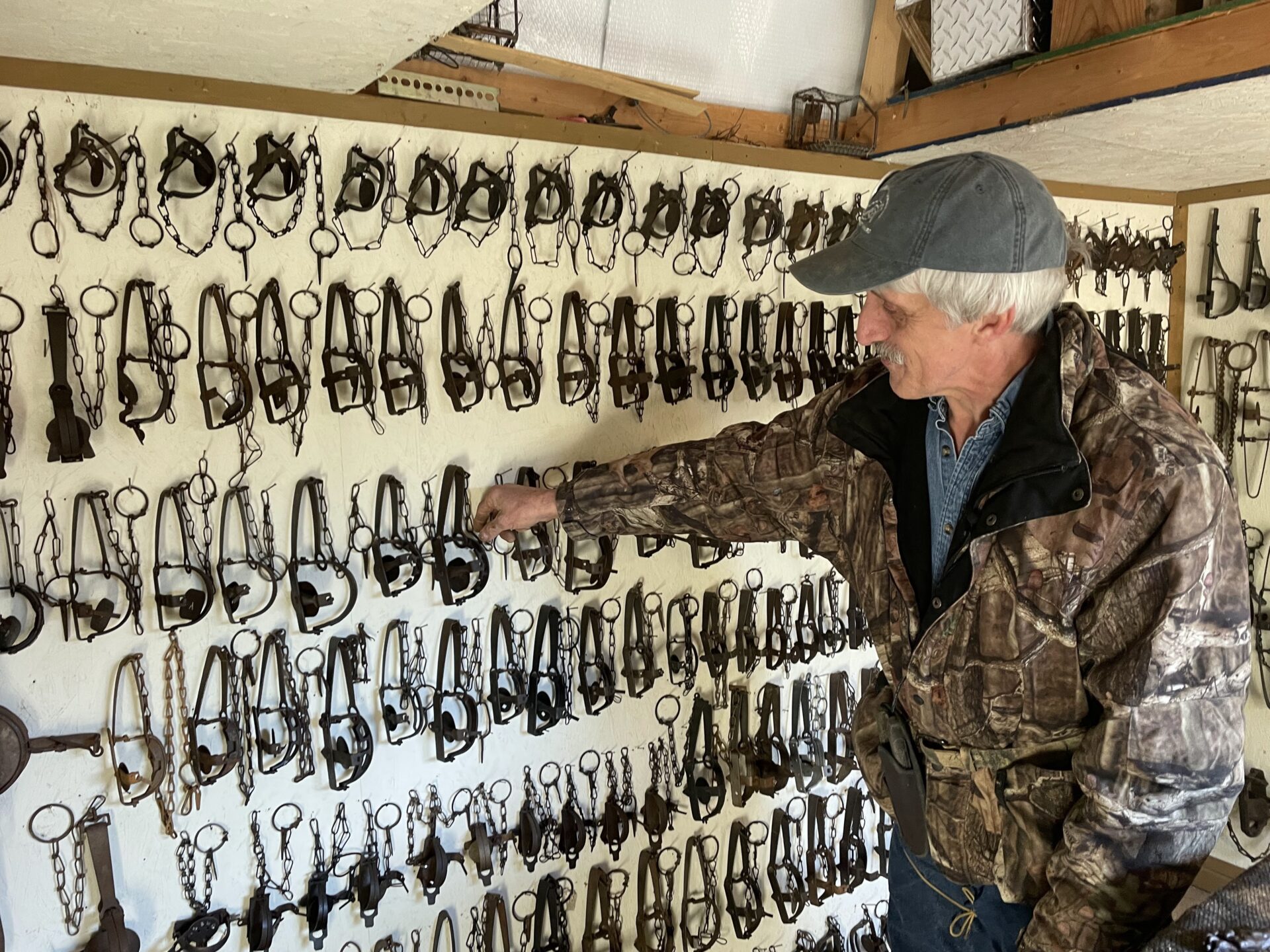PALMER — A new interactive online map is designed to help trail users avoid encounters between their dogs and traplines set near popular trails around Alaska.
The map was developed by the Alaska Wildlife Alliance, an Anchorage-based conservation group that advocates for changes to state trapping regulations such as where traps can be set near trails.
Heavy traps or snares designed for wild animals can capture, kill or maim other animals, including family pets and search and rescue dogs. Shared trails around the state are the source of ongoing conflict between trappers who defend their right to legally trap and dog owners eager to let their animals run free.
The new interactive map, hosted on the Wildlife Alliance website at akwildlife.org/safetrails, is designed to give dog owners crowdsourced information on trap locations via user submissions of trap sightings. The map currently shows historic trap locations reported for 2005 through last year, with about a dozen shown throughout Southcentral Alaska, about 10 in the Interior and three in Southeast.
:quality(70)/cloudfront-us-east-1.images.arcpublishing.com/adn/OUNHBA7L5ZCGBMU64HW5TYIBDI.jpg)
While a code of ethics published by the Alaska Department of Fish and Game asks trappers to “reduce the possibility of catching non-target animals,” there are no statewide rules for how close to trails traps can be set.
Anchorage toughened municipal trapping laws in 2019 to ban the activity within a quarter-mile of trailheads, campgrounds and homes and within 50 yards of most developed trails. Traps or snares must also be marked with a trapper identification number and the owner’s contact information.
:quality(70)/cloudfront-us-east-1.images.arcpublishing.com/adn/OPVYT7L45FGPTE3ELLSCRCCPZU.jpg)
Other cities, including Kenai and Juneau, have their own trapping regulations, while the Matanuska-Susitna Borough has banned trapping in certain borough parks and on school grounds. Trapping rules for state land vary by region and game management unit with closures and other restrictions listed on the Fish and Game website.
Trapping is in season from late fall through spring. About 32,000 state trapping licenses were issued in 2022, according to state data. It is illegal to disrupt trap lines.
The Alaska Wildlife Alliance’s executive director, Nicole Schmitt, called trapping the only recreational use on a multi-use trail system that can be dangerous to other users. Traps and snares kill or injure at least a dozen dogs each year, according to alliance officials.
“People are shocked when their dog is caught or killed in a trap because they just had no idea,” Schmitt said. “We want to get people aware of what the what the situation actually is, and then hopefully trappers can see that trapping next to multi-use areas really does have an impact.”
She said the map isn’t just for dog owners. The organization hopes trappers will also use it to proactively identify where they’ve set lines.
But Pete Buist, a Fairbanks-based spokesman for the Alaska Trappers Association who sat on the state game board under Gov. Frank Murkowski, said he doubts trappers will want to broadcast their trap locations to the world.
“For trappers voluntarily showing everybody where they put their traps, that’s just an invitation to get gear and fur animals stolen,” Buist said.
:quality(70)/arc-anglerfish-arc2-prod-adn.s3.amazonaws.com/public/TSQDFNYWHRFAJCNV2XFDQYBF3M)
Programs asking trappers to disclose sets, as well as proposals for blanket setback rules, are unfair because they put the onus for dog protection on trappers operating legally, rather than on the dog owners who by law are required to control their animals, he said.
“I have never seen a dog caught in a trap if it was on a leash,” Buist said. “So if we really want to solve the problem, it would be to obey the leash laws.”
While leash laws vary across the state, most allow both physical tethers and electronic collars as acceptable forms of restraint.
[Column: Trapping season is upon us. Here’s a refresher course on the dos and don’ts.]
Buist said experienced trappers know to place lines well off the trail, a practice taught in the association’s trapping classes. The association also holds clinics throughout the state to teach dog owners how to release their animal if needed, he said.
Up at Archangel Road, a popular multi-use trail in Hatcher Pass groomed for cross-country skiing, dogs regularly run off leash both on the trail and up adjacent corridors used for backcountry skiing. A pink sign warning of nearby trap activity was posted early this winter at the trailhead after a pair of users encountered a trapper placing lines off a backcountry skiing route.
Alisha Germer, whose springer spaniel Hazel zipped along the trail off-leash as she cross-country skied Wednesday, said she’s interested in seeing the new user map, but wishes it wasn’t needed.
“I actually forgot about people putting traps here,” she said. “I like having my dog off leash, but I also don’t want my dog to die.”
• • •

:quality(70)/cloudfront-us-east-1.images.arcpublishing.com/adn/OIRIYKN26VBM7BYKYYIGS6LTOQ.jpg)



/cloudfront-us-east-1.images.arcpublishing.com/gray/VE5JZGLOMZCDBP4RFGNRIKNBSA.jpg)

/cloudfront-us-east-1.images.arcpublishing.com/gray/7LTLI7Z4AZCBDFU5H3MAJYYUT4.jpg)


















/cdn.vox-cdn.com/uploads/chorus_asset/file/25789444/1258459915.jpg)

/cdn.vox-cdn.com/uploads/chorus_asset/file/25546252/STK169_Mark_Zuckerburg_CVIRGINIA_D.jpg)


/cdn.vox-cdn.com/uploads/chorus_asset/file/23951353/STK043_VRG_Illo_N_Barclay_3_Meta.jpg)